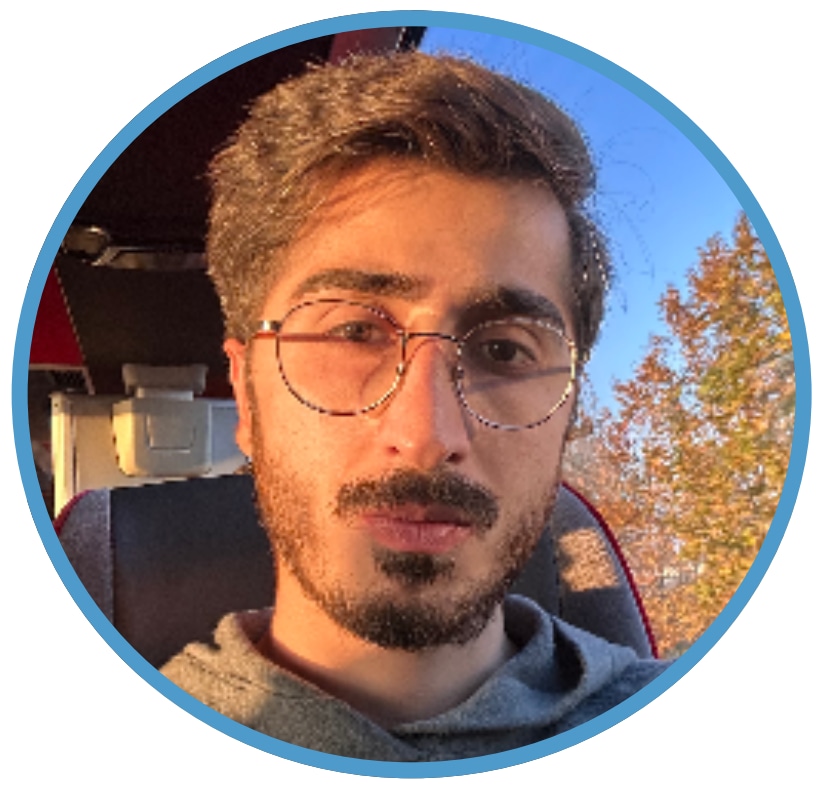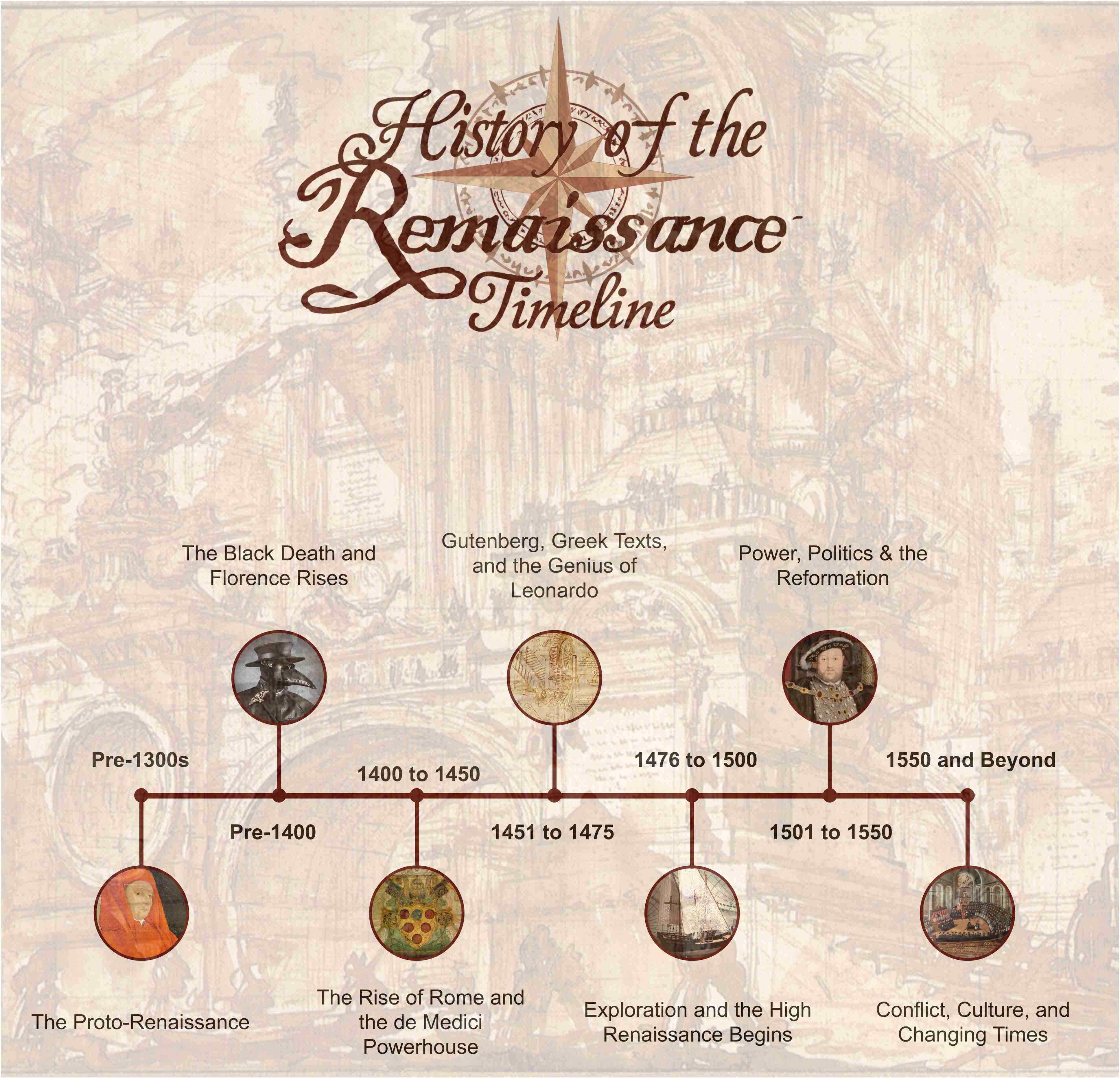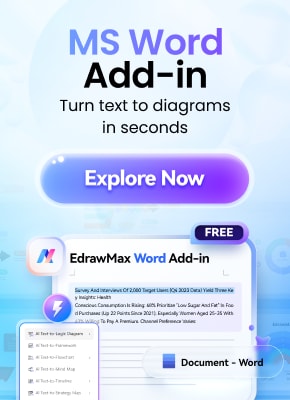They say that the world changes when people dare to think differently.
The Renaissance was exactly that kind of moment. It was more than beautiful paintings or towering cathedrals. Curiosity sparked inventions, explorations, and new ways of seeing the world. Religion, politics, and science were all open to debate.
This timeline will guide you through the key moments of that revolutionary era. You’ll meet the artists, scientists, and explorers who dared to imagine a different world.
In this article
History of the Renaissance Timeline (1300-1600)
They say that the world changes when people dare to think differently.
The Renaissance was exactly that kind of moment. It was more than beautiful paintings or towering cathedrals. Curiosity sparked inventions, explorations, and new ways of seeing the world. Religion, politics, and science were all open to debate.
This timeline will guide you through the key moments of that revolutionary era. You’ll meet the artists, scientists, and explorers who dared to imagine a different world.
The Renaissance was Europe’s big “restart.” It was a time of bold ideas, beautiful art, scientific discoveries, and new ways of thinking. It started in Italy, especially in Florence, and lasted roughly from the 14th to the 17th century. Later, it spread across the whole of Europe. Art, science, literature, politics, and even maps were transformed.
From Leonardo da Vinci’s inventions to Shakespeare’s plays, the Renaissance reshaped the world. People explored, created, and questioned everything. So, let’s travel back in time and explore the Renaissance timeline. Along the way, we’ll meet the people and events that made this period unforgettable.
Pre-1300s: The Proto-Renaissance
Before the Renaissance fully started, change was already in the air. Giotto di Bondone, in the early 1300s, painted people with real emotions. His religious scenes looked alive, not stiff like medieval art.
Dante Alighieri wrote The Divine Comedy, a thrilling journey through hell, purgatory, and heaven. It combined medieval religion with human experience. Francesco Petrarch, born in 1304 and known as the “Father of Humanism,” loved reading Roman authors. He inspired people to study the past and think for themselves.
Pre-1400: The Black Death and Florence Rises
The Renaissance didn’t start quietly. The Black Death arrived in 1347, killing millions. The aftermath was strange: fewer people meant more opportunities for survivors. Cities like Florence began to flourish, and wealthy families, especially the Medici, poured money into art, learning, and culture.
Petrarch continued inspiring humanist thought. Boccaccio wrote The Decameron, telling stories of love, fear, and life during the plague. Dante’s work helped bridge medieval thinking with bold new ideas. Florence was preparing to shine.
1400 - 1450: The Rise of Rome and the Medici Powerhouse
Florence became Italy’s cultural heart. Donatello sculpted statues that seemed alive. Masaccio painted in 3D using perspective. Art began to feel human, not just religious.
Cosimo de Medici ran the family bank and secretly ruled the city. Lorenzo Valla exposed forged Church documents. Rome and Venice spent fortunes building cathedrals and funding art. Schools taught humanism, encouraging debate, study, and creativity. The Renaissance was officially underway.
1451 - 1475: Gutenberg, Greek Texts, and Leonardo
In 1452, Leonardo da Vinci was born. Artist, inventor, scientist, dreamer, he would become the face of the Renaissance.
In 1453, Constantinople fell to the Ottomans. Greek scholars fled west, bringing ancient books that sparked learning across Europe. Gutenberg’s printing press appeared in 1454, making books and ideas spread faster than ever. Lorenzo “The Magnificent” de Medici led Florence, turning it into a hub for artists and thinkers.
1476 - 1500: Exploration and the High Renaissance Begins
Exploration reshaped Europe. Bartolomeu Dias rounded Africa in 1488. Columbus reached the Bahamas in 1492. Vasco da Gama sailed to India in 1498. New lands, wealth, and trade routes excited Europe.
Italy had drama too. Savonarola, a fiery preacher, briefly ruled Florence and burned “sinful” art before being excommunicated and executed. Botticelli painted Primavera, Michelangelo sculpted early masterpieces, and da Vinci painted The Last Supper. Science flourished, Luca Pacioli taught da Vinci math and the Golden Ratio.
1501 - 1550: Power, Politics & the Reformation
The Renaissance spread far and wide. Popes like Julius II sponsored Michelangelo and Raphael. Henry VIII in England, Francis I in France, and Charles V in Spain built empires and fought for control.
In 1517, Martin Luther nailed his 95 Theses, challenging the Church and sparking the Reformation. Creativity did not stop. Michelangelo painted the Sistine Chapel. Da Vinci gave the world the Mona Lisa. Machiavelli wrote The Prince, Erasmus wrote Praise of Folly, and Thomas More imagined Utopia. Copernicus said Earth was not the center of the universe, and Vesalius mapped the human body like never before.
1550 and Beyond: Conflict, Culture, and Changing Times
Europe faced religious wars and unrest. The Peace of Augsburg in 1555 allowed Catholics and Protestants to coexist. Charles V retired in 1556, handing Spain to Philip II. Elizabeth I ruled England, starting its Golden Age. Battles like Lepanto (1571) and events like the St. Bartholomew’s Day Massacre (1572) showed that conflict continued.
Even amidst chaos, the Renaissance thrived. Isabella Whitney published secular poetry. Mercator made modern maps. Montaigne invented the personal essay. Shakespeare wrote Hamlet, changing theater forever. Cervantes wrote Don Quixote, a novel unlike anything before. The Renaissance spirit of curiosity, creativity, and bold thinking lived on, shaping the modern world.
How to Make History of the Renaissance Timeline in EdrawMax?
The Renaissance was an exciting period, but it can be confusing to track all the events. A visual timeline helps make sense of it all. With EdrawMax, a wonderful timeline software, making timelines and mind maps is quick and easy.
Let’s see how you can create your Renaissance history timeline using EdrawMax:
Step1Start with a Blank Canvas
- Launch EdrawMax on your desktop.
- Sign in, or create an account if you don’t already have one.
- Click New on the left panel and choose Blank Drawing to open a fresh canvas.
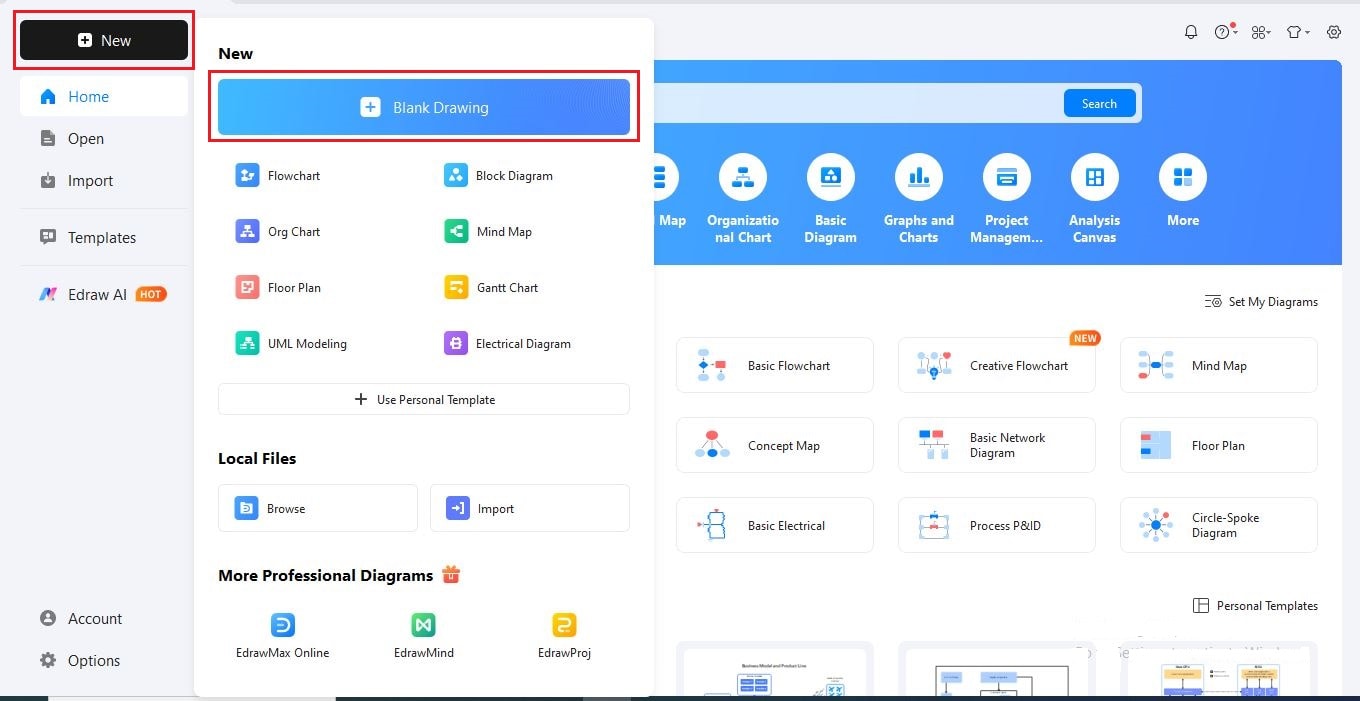
Step2Add a Background Image
- Go to the Insert tab on the top toolbar and select Picture.
- Click Local Pictures and upload an image to serve as your timeline’s background.
- To adjust the brightness, contrast, or transparency, select the image and use the Adjust options in the customization panel.
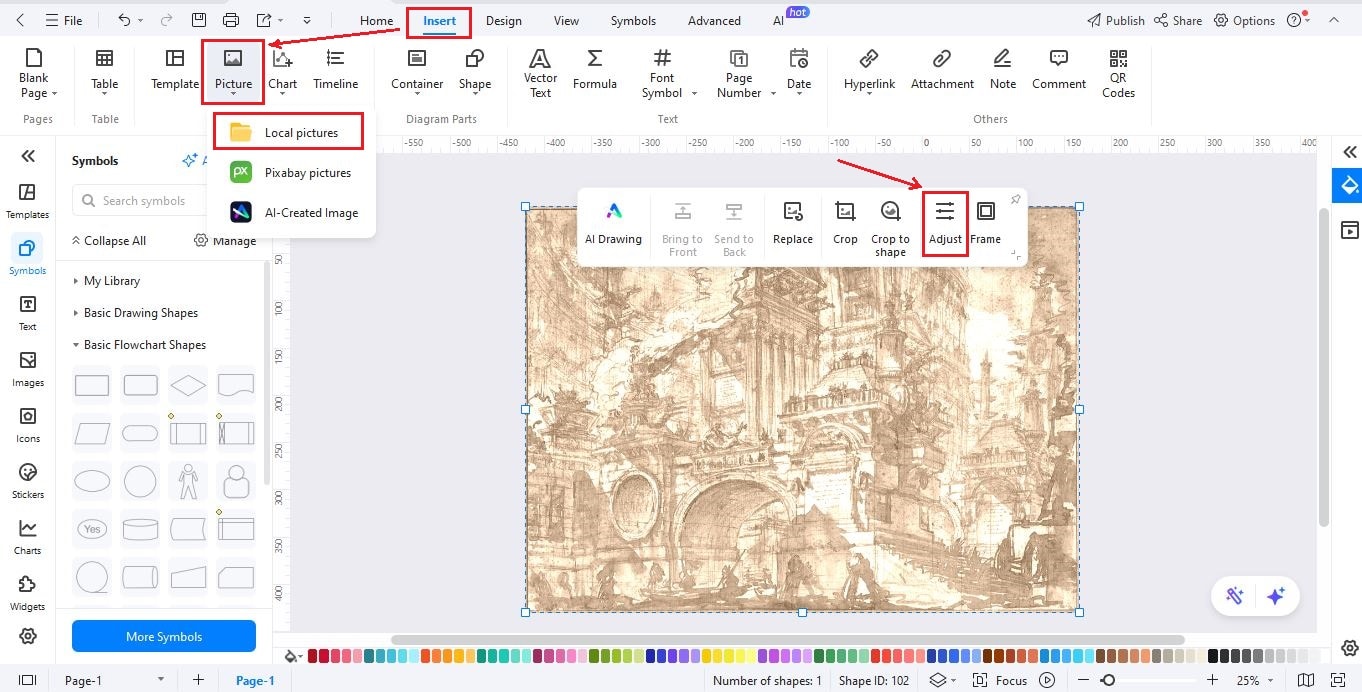
Step3Insert a Timeline Heading
- You can add a title using either a text box or an image. For this example, let’s use an image.
- Click Insert > Picture, and then choose Local Pictures to place your heading.
- You can also add a symbol or icon to enhance the look of the title.
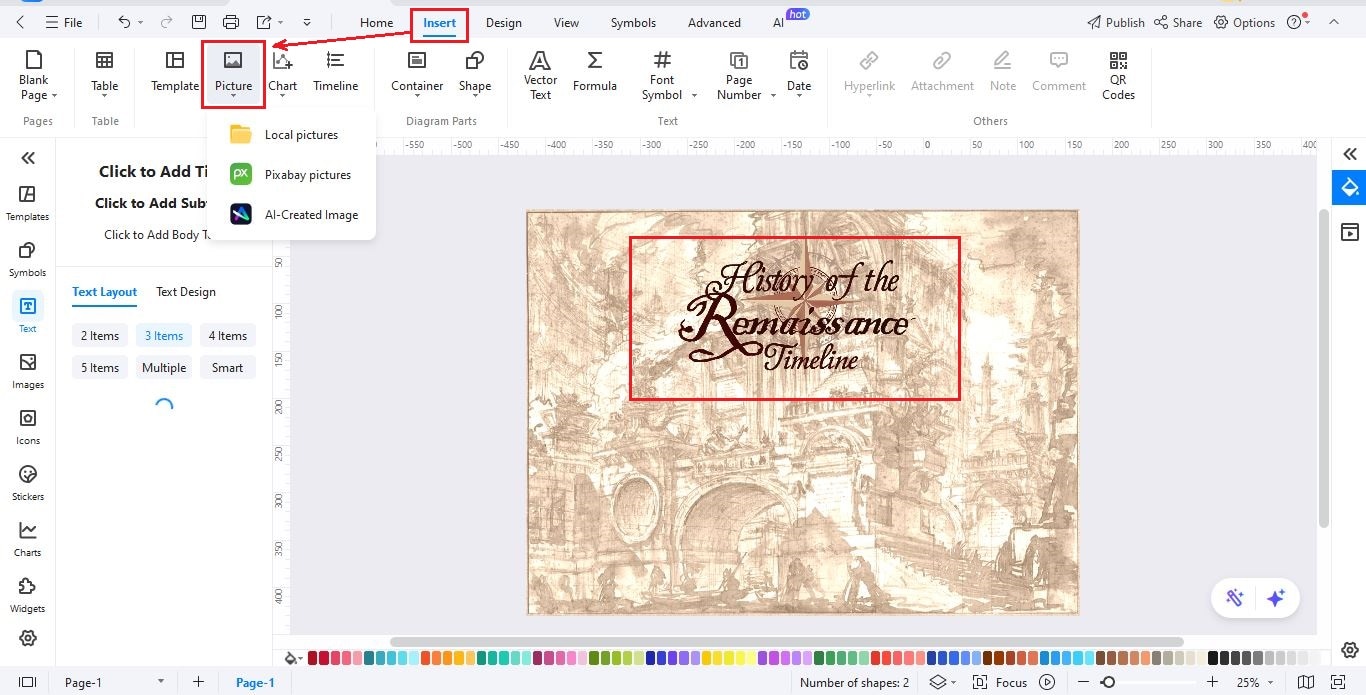
Step4Insert the Timeline Layout
- Click Insert on the top menu to add timeline layout.
- Select Timeline, scroll down, and choose Horizontal Timeline.
- Pick the option with images included, and click OK to insert it.
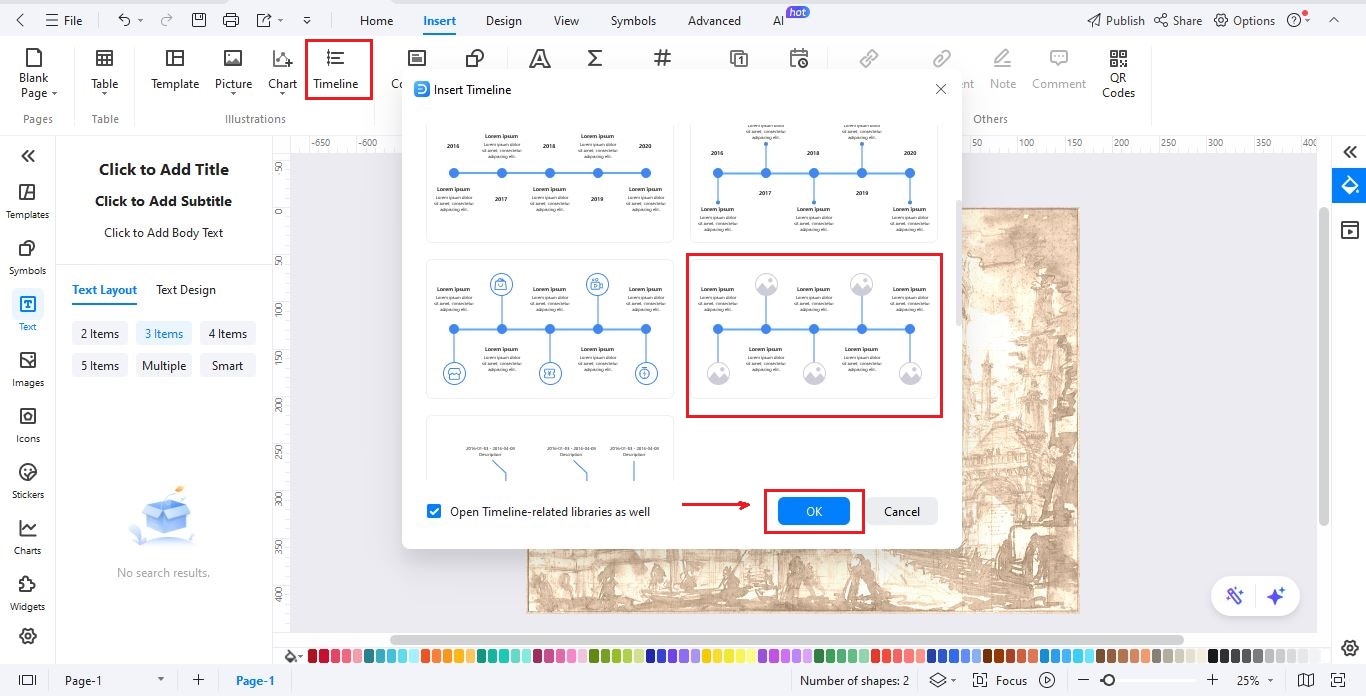
Step5Enter Text into the Timeline
- Click Text on the left editing panel.
- Use Click to Add Subtitle to enter the first timeline date.
- Then, use Click to Add Body to write a short description or highlight of the event.
- Continue this process to add the rest of your timeline dates and events.
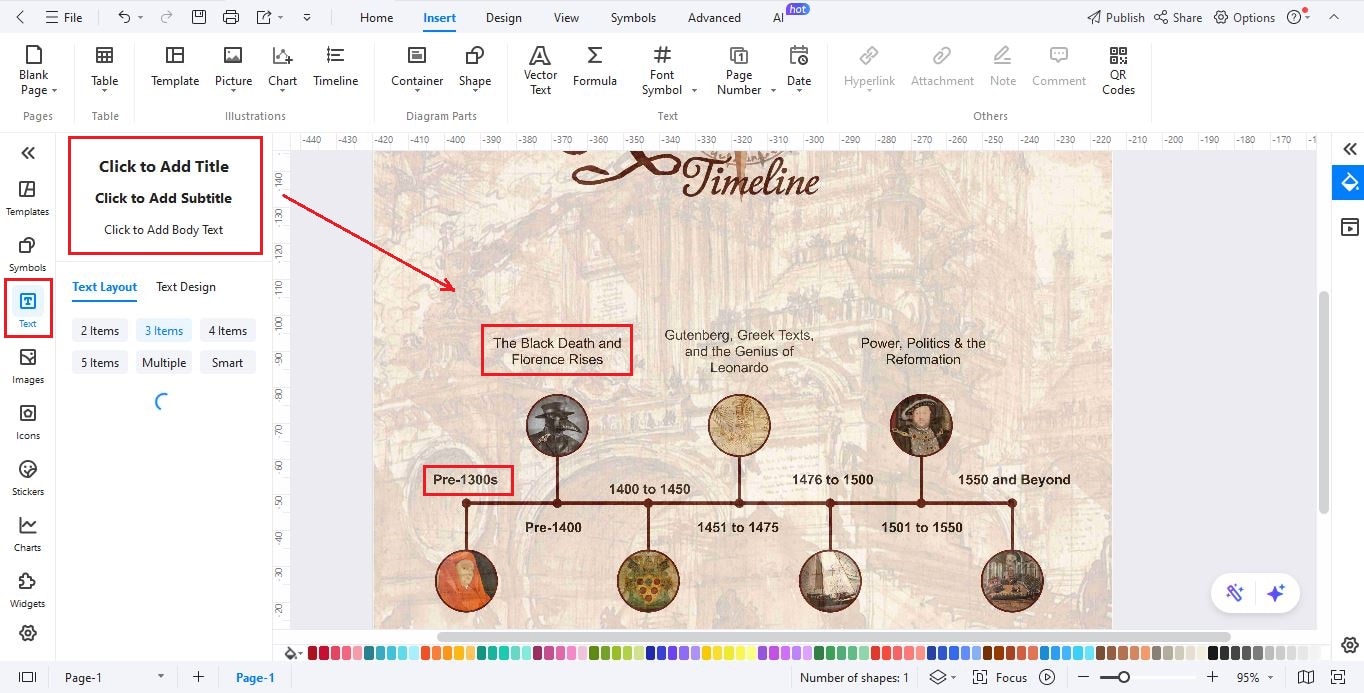
Step6Insert Thumbnail Images
- Make your timeline visually appealing by adding thumbnails.
- Go to Insert > Picture > Local Pictures and place images for each event or year.
- To customize the look, click on the thumbnail, select Crop to Shape, and choose a frame style.
- Repeat the process for all the remaining milestones.
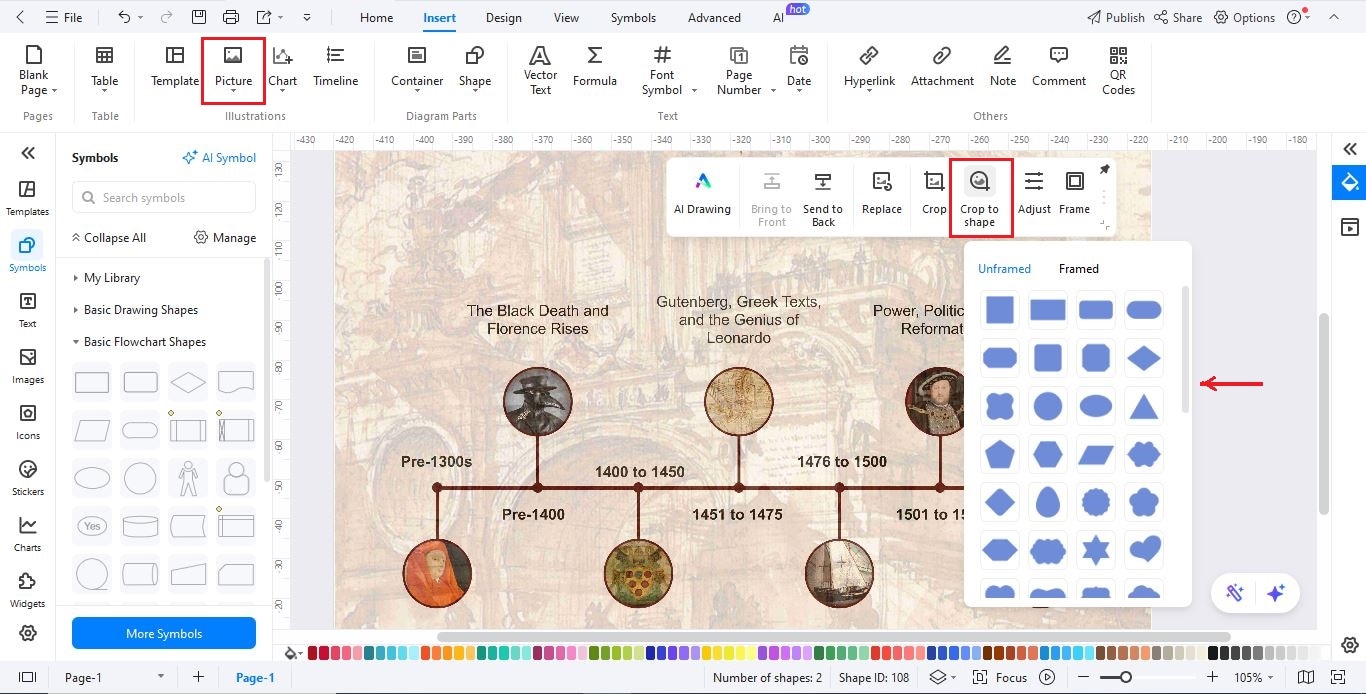
Step7Export Your Timeline
- When your timeline is ready, go to the File in the top-left, and click Save to keep your timeline editable for later changes.
- To share with others, click the Share button. If you want a static file, go to File > Export and choose PNG, PDF, SVG, HTML, Visio, or Excel.
- For publishing in the EdrawMax community, just click Publish and your timeline will be visible to others.
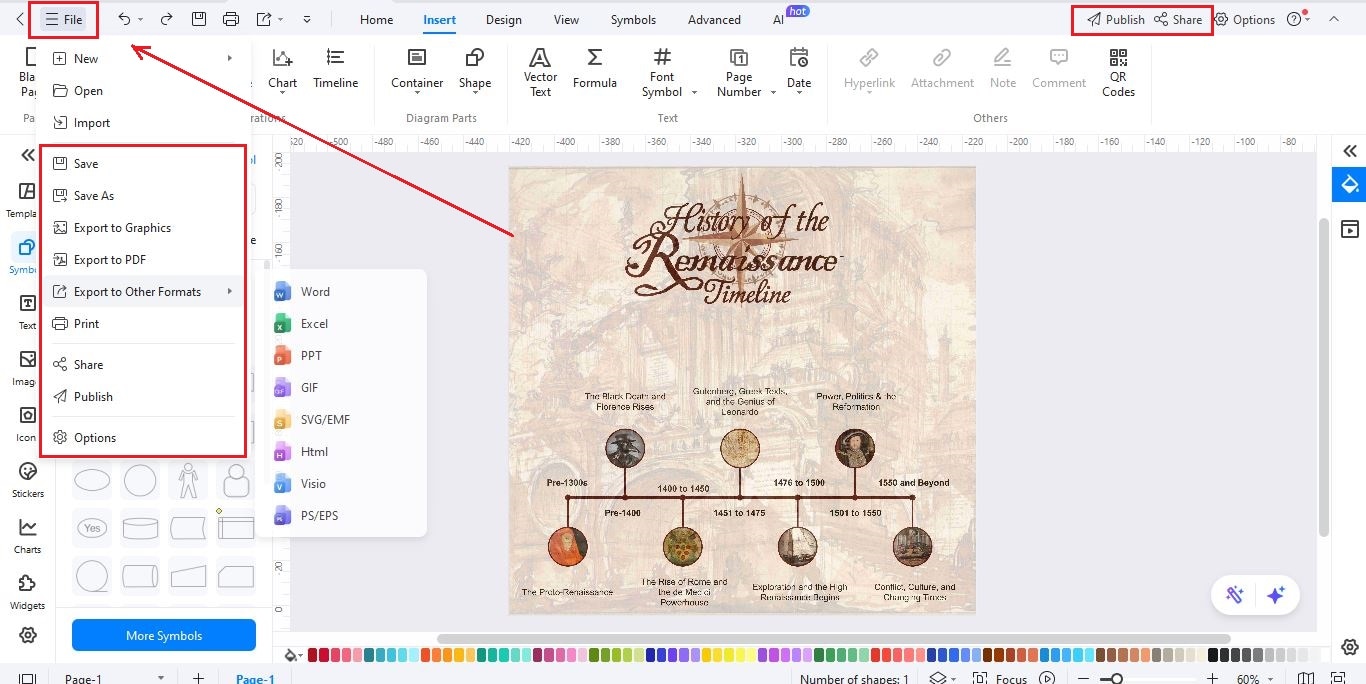
Closing Remarks
Well, you might be thinking, when did the Renaissance end? There isn’t one exact date, but by the early 1600s, things were changing. Baroque art became popular, religious fights grew stronger, and scientists asked bigger questions. Galileo used a telescope to show that the Earth moves around the Sun. The Enlightenment was coming next. All of this started because the Renaissance dared to ask: What if there’s more to learn?
If you want to see how one era flows into the next, try EdrawMax. It helps you connect events and ideas visually, making history easier to follow and understand.
